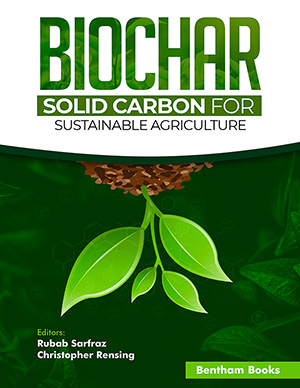
Abstract
Sophora japonica, a species of Sophora, one of the prominent genera, belongs to the family Fabaceae, native to China, which is commonly known as a pagoda tree. Sophora, includes nearly 52 species, nineteen varieties and many of these species have been used in traditional Chinese medicine to cure various ailments. This review compiles its ethnomedical uses, diverse phytochemicals reported from the various parts of S. japonica, and their pharmacological effects to elucidate its therapeutic potential against a wide range of diseases. Traditionally it is used to treat various hematic disorders such as hypertension, hemorrhoids, hemorrhage, hematuria, hematochezia, dysentery, arteriosclerosis, etc. Moreover, each and every part of this plant, including the flowers, buds, leaves, bark, fruits, seeds, pericarp, stems, and roots are used as medicine, particularly in China, Japan, Korea, and Asia. Chinese Pharmacopoeia and European Pharmacopoeia describe the utility of this plant since ancient times. The enhanced use of S. japonica in Chinese medicine resulted in the exploration of various phytochemicals and their pharmacological properties includes in vitro, in vivo, and clinical studies. It is enchanted with steroids, phospholipids, flavonoids, isoflavonoids, alkaloids, triterpenes, and other phenolic compounds that are characterized by therapeutic activities such as anti-oxidant, anticancer, anti-asthmatic, anti-neoplastic, antimicrobial, antiviral, antidote, anti-pyretic, cardiotonic, anti-inflammatory, diuretic, anti-platelet, anti-hyperglycemic, immunomodulatory, anti-diabetic, estrogenic, and anti-osteoporotic activity in post-menopausal women etc. and this is also used as a remedy for skin diseases like eczema, colpitis, and psoriasis. Despite its health benefits, supplementary data is still required in order to bridge the gaps and ensure the possible safety profile by conducting clinical studies for its therapeutic applications as a natural and eminent safe drug.
Keywords: Sophora japonica, isoflavonoids, alkaloids, anti-diabetic, post-menopausal anti-osteoporotic effect, antiinflammatory.
[http://dx.doi.org/10.1016/j.jep.2016.04.014] [PMID: 27085938]
[http://dx.doi.org/10.1371/journal.pone.0098559] [PMID: 24892557]
[http://dx.doi.org/10.1007/s10600-016-1780-7]
[http://dx.doi.org/10.1016/S0031-9422(02)00757-4] [PMID: 12770599]
[http://dx.doi.org/10.1016/j.fitote.2013.03.019] [PMID: 23562628]
[http://dx.doi.org/10.5455/jice.20131031042628]
[http://dx.doi.org/10.1590/S1516-89132013000300011]
[http://dx.doi.org/10.7732/kjpr.2015.28.3.297]
[http://dx.doi.org/10.1016/j.nutres.2013.08.004] [PMID: 24267045]
[http://dx.doi.org/10.1016/j.intimp.2013.01.025] [PMID: 23415872]
[http://dx.doi.org/10.1016/j.fpsl.2019.100460]
[http://dx.doi.org/10.2174/1381612043384664] [PMID: 15134560]
[http://dx.doi.org/10.1016/j.jep.2006.01.010] [PMID: 16497459]
[http://dx.doi.org/10.1021/jf203146e] [PMID: 22023309]
[http://dx.doi.org/10.1080/10286020290027407] [PMID: 12067157]
[http://dx.doi.org/10.1016/j.jep.2013.10.036] [PMID: 24184193]
[http://dx.doi.org/10.1016/j.phymed.2019.153070] [PMID: 31514082]
[http://dx.doi.org/10.1007/s10787-020-00723-5] [PMID: 32504221]
[http://dx.doi.org/10.1248/yakushi1947.109.3_179] [PMID: 2754619]
[http://dx.doi.org/10.1016/j.jep.2009.04.053] [PMID: 19422905]
[http://dx.doi.org/10.1016/j.phymed.2005.09.005] [PMID: 17085294]
[http://dx.doi.org/10.1007/s12272-001-1242-1] [PMID: 18704331]
[http://dx.doi.org/10.1016/j.bmcl.2010.08.054] [PMID: 20822902]
[http://dx.doi.org/10.1016/j.jep.2021.113843] [PMID: 33493588]
[http://dx.doi.org/10.1007/s12272-010-0405-0] [PMID: 20422360]
[PMID: 9812752]
[PMID: 9863231]
[PMID: 9812722]
[PMID: 11243207]
[PMID: 15015368]
[http://dx.doi.org/10.1016/j.intimp.2008.08.008] [PMID: 18775799]
[http://dx.doi.org/10.1080/10286020290019622] [PMID: 11991186]
[PMID: 51003]
[http://dx.doi.org/10.1016/0031-9422(75)85038-2]
[http://dx.doi.org/10.1080/13880200601113123]
[http://dx.doi.org/10.1016/j.phytochem.2009.04.003] [PMID: 19447452]
[http://dx.doi.org/10.1016/S1350-4177(00)00075-4] [PMID: 11441614]
[http://dx.doi.org/10.1007/s12272-021-01354-2] [PMID: 34907492]
[http://dx.doi.org/10.1055/s-0029-1185944] [PMID: 19637114]
[http://dx.doi.org/10.1248/cpb.35.857] [PMID: 3594696]
[http://dx.doi.org/10.1248/yakushi1947.104.4_340] [PMID: 6491872]
[http://dx.doi.org/10.1016/j.bmcl.2015.02.051] [PMID: 25746812]
[http://dx.doi.org/10.1248/yakushi1947.108.6_538]
[http://dx.doi.org/10.1007/s11418-014-0877-1] [PMID: 25398298]
[http://dx.doi.org/10.3748/wjg.v11.i3.426] [PMID: 15637760]
[http://dx.doi.org/10.1007/BF00579994]
[http://dx.doi.org/10.1023/A:1013784222933]
[http://dx.doi.org/10.1248/bpb.28.845] [PMID: 15863891]
[http://dx.doi.org/10.1007/BF00564330]
[http://dx.doi.org/10.1007/BF01164887]
[http://dx.doi.org/10.1248/cpb.39.3346] [PMID: 1814628]
[http://dx.doi.org/10.1016/j.phytochem.2007.03.004] [PMID: 17462679]
[http://dx.doi.org/10.1007/s00044-014-1101-2]
[http://dx.doi.org/10.1021/np070396t] [PMID: 18047294]
[http://dx.doi.org/10.1016/S0031-9422(00)80164-8]
[http://dx.doi.org/10.5012/bkcs.2004.25.1.147]
[http://dx.doi.org/10.1007/s12272-010-0805-1] [PMID: 20803118]
[http://dx.doi.org/10.1080/10286020701273858] [PMID: 18058382]
[http://dx.doi.org/10.1016/j.lfs.2005.09.034] [PMID: 16309710]
[http://dx.doi.org/10.1248/yakushi1947.96.2_254] [PMID: 985878]
[http://dx.doi.org/10.1248/cpb.35.1637]
[http://dx.doi.org/10.1007/s10600-018-2425-9]
[http://dx.doi.org/10.1248/cpb.11.167]
[http://dx.doi.org/10.1002/jssc.200600528] [PMID: 17638350]
[http://dx.doi.org/10.1016/j.chroma.2006.12.002] [PMID: 17174318]
[PMID: 12776332]
[http://dx.doi.org/10.1021/np010081s] [PMID: 11520241]
[http://dx.doi.org/10.1002/jssc.200600334] [PMID: 17566335]
[http://dx.doi.org/10.1016/j.lfs.2003.09.047] [PMID: 14969719]
[http://dx.doi.org/10.1016/j.lfs.2005.11.004] [PMID: 16325868]
[http://dx.doi.org/10.1016/j.talanta.2007.05.019] [PMID: 19073123]
[http://dx.doi.org/10.1248/cpb.37.1616] [PMID: 2776244]
[http://dx.doi.org/10.1007/978-3-642-73739-8_114]
[http://dx.doi.org/10.3746/jkfn.2009.38.1.009]
[http://dx.doi.org/10.1093/jn/130.7.1695] [PMID: 10867038]
[http://dx.doi.org/10.1007/BF02976960] [PMID: 12735689]
[http://dx.doi.org/10.1055/s-1999-14016] [PMID: 10418325]
[http://dx.doi.org/10.3736/jcim20090305] [PMID: 19284950]
[http://dx.doi.org/10.1055/s-2003-39712] [PMID: 12802736]
[http://dx.doi.org/10.1007/BF02282362]
[http://dx.doi.org/10.24925/turjaf.v11i2.383-389.5362]
[http://dx.doi.org/10.1016/j.foodhyd.2009.09.004]
[PMID: 24359131]
[http://dx.doi.org/10.1055/s-2008-1034304] [PMID: 18283616]
[http://dx.doi.org/10.5483/BMBRep.2012.45.7.065] [PMID: 22831973]
[http://dx.doi.org/10.1007/s11418-017-1084-7] [PMID: 28357634]
[http://dx.doi.org/10.4028/www.scientific.net/AMM.664.397]
[http://dx.doi.org/10.1271/bbb.60238] [PMID: 17031059]
[http://dx.doi.org/10.1016/j.sjbs.2017.01.051] [PMID: 28386205]
[http://dx.doi.org/10.1210/endo.142.7.8241] [PMID: 11416015]
[http://dx.doi.org/10.1007/BF02994754] [PMID: 14723336]
[http://dx.doi.org/10.1007/BF02977760] [PMID: 15974444]
[http://dx.doi.org/10.1001/jama.290.2.207] [PMID: 12851275]
[http://dx.doi.org/10.1021/jf052927u] [PMID: 16478248]
[http://dx.doi.org/10.1007/BF02975144] [PMID: 15742817]
[PMID: 24250585]
[http://dx.doi.org/10.1016/S0024-3205(00)00873-0] [PMID: 11106000]
[http://dx.doi.org/10.1016/j.bmc.2007.10.085] [PMID: 17996449]
[http://dx.doi.org/10.4103/0973-1296.149708] [PMID: 25709214]
[http://dx.doi.org/10.1016/j.ejphar.2013.04.047] [PMID: 23669248]
[http://dx.doi.org/10.1097/00042192-200107000-00007] [PMID: 11449083]
[http://dx.doi.org/10.1016/j.bioorg.2020.103863] [PMID: 32334197]
 23
23 2
2




























